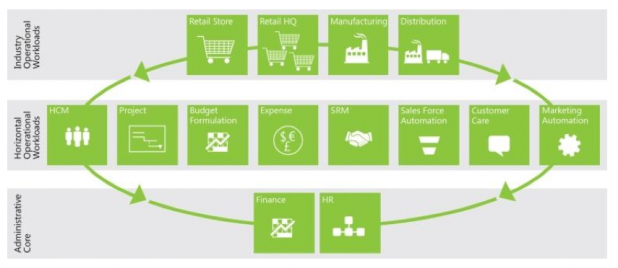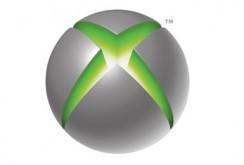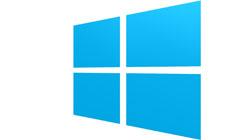 Microsoft claims Dynamics AX 2012 R2 can handle a variety of business workloads.[/caption] Microsoft Dynamics AX 2012 R2 has hit its general-availability milestone. The final release of the platform includes support for multiple languages and a number of localized regulatory requirements, helpful for any company wanting to engage in international operations without irritating the local authorities. Based on its own real-world examples, Microsoft is clearly targeting businesses with global reach and numerous subsidiaries using multiple types of software platforms—making it difficult to share customer and operational data. In the name of unifying that data infrastructure, Dynamics AX 2012 R2 features business-intelligence capabilities built atop Microsoft SQL Server, which can pull in data from multiple sources—the better (at least in theory) to make more informed decisions about business processes. (Those interested in all the new features can download a nifty PDF from Microsoft’s Website.) Waiting in the proverbial wings is Microsoft Dynamics GP 2013, which if everything goes smoothly will hit its release milestone Dec. 19. That platform includes a variety of features and capabilities for small- to midsize businesses (SMBs), including interoperability with Office 365, Microsoft’s cloud-based productivity suite. Microsoft will also update its Microsoft Dynamics CRM in mid-December, adding deeper integration with Yammer and Skype, along with embedded Bing Maps and compatibility with the latest version of Microsoft Office. In a November research note, IDC suggested that business demand for CRM and collaboration platforms was helping drive the $167 billion worldwide software market. “Increasingly, companies are thinking of social solutions as decision support and ad hoc work facilitators and are looking for richer features that integrate data and content with people and systems,” Vanessa Thompson, research manager for IDC’s Enterprise Social Networks and Collaborative Technologies unit, wrote in a statement. “In the new collaborative enterprise,” she added, “companies are extending asynchronous data and content sharing capabilities to enable collaboration with a broader range of external constituents, including customers, partners, and suppliers.” That means Microsoft—and its competitors—have no choice but to update their respective CRM and ERP platforms: anything not cutting-edge is obsolete. Image: Microsoft
Microsoft claims Dynamics AX 2012 R2 can handle a variety of business workloads.[/caption] Microsoft Dynamics AX 2012 R2 has hit its general-availability milestone. The final release of the platform includes support for multiple languages and a number of localized regulatory requirements, helpful for any company wanting to engage in international operations without irritating the local authorities. Based on its own real-world examples, Microsoft is clearly targeting businesses with global reach and numerous subsidiaries using multiple types of software platforms—making it difficult to share customer and operational data. In the name of unifying that data infrastructure, Dynamics AX 2012 R2 features business-intelligence capabilities built atop Microsoft SQL Server, which can pull in data from multiple sources—the better (at least in theory) to make more informed decisions about business processes. (Those interested in all the new features can download a nifty PDF from Microsoft’s Website.) Waiting in the proverbial wings is Microsoft Dynamics GP 2013, which if everything goes smoothly will hit its release milestone Dec. 19. That platform includes a variety of features and capabilities for small- to midsize businesses (SMBs), including interoperability with Office 365, Microsoft’s cloud-based productivity suite. Microsoft will also update its Microsoft Dynamics CRM in mid-December, adding deeper integration with Yammer and Skype, along with embedded Bing Maps and compatibility with the latest version of Microsoft Office. In a November research note, IDC suggested that business demand for CRM and collaboration platforms was helping drive the $167 billion worldwide software market. “Increasingly, companies are thinking of social solutions as decision support and ad hoc work facilitators and are looking for richer features that integrate data and content with people and systems,” Vanessa Thompson, research manager for IDC’s Enterprise Social Networks and Collaborative Technologies unit, wrote in a statement. “In the new collaborative enterprise,” she added, “companies are extending asynchronous data and content sharing capabilities to enable collaboration with a broader range of external constituents, including customers, partners, and suppliers.” That means Microsoft—and its competitors—have no choice but to update their respective CRM and ERP platforms: anything not cutting-edge is obsolete. Image: Microsoft Microsoft Gears Up New Dynamics Releases
[caption id="attachment_6298" align="aligncenter" width="618"]  Microsoft claims Dynamics AX 2012 R2 can handle a variety of business workloads.[/caption] Microsoft Dynamics AX 2012 R2 has hit its general-availability milestone. The final release of the platform includes support for multiple languages and a number of localized regulatory requirements, helpful for any company wanting to engage in international operations without irritating the local authorities. Based on its own real-world examples, Microsoft is clearly targeting businesses with global reach and numerous subsidiaries using multiple types of software platforms—making it difficult to share customer and operational data. In the name of unifying that data infrastructure, Dynamics AX 2012 R2 features business-intelligence capabilities built atop Microsoft SQL Server, which can pull in data from multiple sources—the better (at least in theory) to make more informed decisions about business processes. (Those interested in all the new features can download a nifty PDF from Microsoft’s Website.) Waiting in the proverbial wings is Microsoft Dynamics GP 2013, which if everything goes smoothly will hit its release milestone Dec. 19. That platform includes a variety of features and capabilities for small- to midsize businesses (SMBs), including interoperability with Office 365, Microsoft’s cloud-based productivity suite. Microsoft will also update its Microsoft Dynamics CRM in mid-December, adding deeper integration with Yammer and Skype, along with embedded Bing Maps and compatibility with the latest version of Microsoft Office. In a November research note, IDC suggested that business demand for CRM and collaboration platforms was helping drive the $167 billion worldwide software market. “Increasingly, companies are thinking of social solutions as decision support and ad hoc work facilitators and are looking for richer features that integrate data and content with people and systems,” Vanessa Thompson, research manager for IDC’s Enterprise Social Networks and Collaborative Technologies unit, wrote in a statement. “In the new collaborative enterprise,” she added, “companies are extending asynchronous data and content sharing capabilities to enable collaboration with a broader range of external constituents, including customers, partners, and suppliers.” That means Microsoft—and its competitors—have no choice but to update their respective CRM and ERP platforms: anything not cutting-edge is obsolete. Image: Microsoft
Microsoft claims Dynamics AX 2012 R2 can handle a variety of business workloads.[/caption] Microsoft Dynamics AX 2012 R2 has hit its general-availability milestone. The final release of the platform includes support for multiple languages and a number of localized regulatory requirements, helpful for any company wanting to engage in international operations without irritating the local authorities. Based on its own real-world examples, Microsoft is clearly targeting businesses with global reach and numerous subsidiaries using multiple types of software platforms—making it difficult to share customer and operational data. In the name of unifying that data infrastructure, Dynamics AX 2012 R2 features business-intelligence capabilities built atop Microsoft SQL Server, which can pull in data from multiple sources—the better (at least in theory) to make more informed decisions about business processes. (Those interested in all the new features can download a nifty PDF from Microsoft’s Website.) Waiting in the proverbial wings is Microsoft Dynamics GP 2013, which if everything goes smoothly will hit its release milestone Dec. 19. That platform includes a variety of features and capabilities for small- to midsize businesses (SMBs), including interoperability with Office 365, Microsoft’s cloud-based productivity suite. Microsoft will also update its Microsoft Dynamics CRM in mid-December, adding deeper integration with Yammer and Skype, along with embedded Bing Maps and compatibility with the latest version of Microsoft Office. In a November research note, IDC suggested that business demand for CRM and collaboration platforms was helping drive the $167 billion worldwide software market. “Increasingly, companies are thinking of social solutions as decision support and ad hoc work facilitators and are looking for richer features that integrate data and content with people and systems,” Vanessa Thompson, research manager for IDC’s Enterprise Social Networks and Collaborative Technologies unit, wrote in a statement. “In the new collaborative enterprise,” she added, “companies are extending asynchronous data and content sharing capabilities to enable collaboration with a broader range of external constituents, including customers, partners, and suppliers.” That means Microsoft—and its competitors—have no choice but to update their respective CRM and ERP platforms: anything not cutting-edge is obsolete. Image: Microsoft
 Microsoft claims Dynamics AX 2012 R2 can handle a variety of business workloads.[/caption] Microsoft Dynamics AX 2012 R2 has hit its general-availability milestone. The final release of the platform includes support for multiple languages and a number of localized regulatory requirements, helpful for any company wanting to engage in international operations without irritating the local authorities. Based on its own real-world examples, Microsoft is clearly targeting businesses with global reach and numerous subsidiaries using multiple types of software platforms—making it difficult to share customer and operational data. In the name of unifying that data infrastructure, Dynamics AX 2012 R2 features business-intelligence capabilities built atop Microsoft SQL Server, which can pull in data from multiple sources—the better (at least in theory) to make more informed decisions about business processes. (Those interested in all the new features can download a nifty PDF from Microsoft’s Website.) Waiting in the proverbial wings is Microsoft Dynamics GP 2013, which if everything goes smoothly will hit its release milestone Dec. 19. That platform includes a variety of features and capabilities for small- to midsize businesses (SMBs), including interoperability with Office 365, Microsoft’s cloud-based productivity suite. Microsoft will also update its Microsoft Dynamics CRM in mid-December, adding deeper integration with Yammer and Skype, along with embedded Bing Maps and compatibility with the latest version of Microsoft Office. In a November research note, IDC suggested that business demand for CRM and collaboration platforms was helping drive the $167 billion worldwide software market. “Increasingly, companies are thinking of social solutions as decision support and ad hoc work facilitators and are looking for richer features that integrate data and content with people and systems,” Vanessa Thompson, research manager for IDC’s Enterprise Social Networks and Collaborative Technologies unit, wrote in a statement. “In the new collaborative enterprise,” she added, “companies are extending asynchronous data and content sharing capabilities to enable collaboration with a broader range of external constituents, including customers, partners, and suppliers.” That means Microsoft—and its competitors—have no choice but to update their respective CRM and ERP platforms: anything not cutting-edge is obsolete. Image: Microsoft
Microsoft claims Dynamics AX 2012 R2 can handle a variety of business workloads.[/caption] Microsoft Dynamics AX 2012 R2 has hit its general-availability milestone. The final release of the platform includes support for multiple languages and a number of localized regulatory requirements, helpful for any company wanting to engage in international operations without irritating the local authorities. Based on its own real-world examples, Microsoft is clearly targeting businesses with global reach and numerous subsidiaries using multiple types of software platforms—making it difficult to share customer and operational data. In the name of unifying that data infrastructure, Dynamics AX 2012 R2 features business-intelligence capabilities built atop Microsoft SQL Server, which can pull in data from multiple sources—the better (at least in theory) to make more informed decisions about business processes. (Those interested in all the new features can download a nifty PDF from Microsoft’s Website.) Waiting in the proverbial wings is Microsoft Dynamics GP 2013, which if everything goes smoothly will hit its release milestone Dec. 19. That platform includes a variety of features and capabilities for small- to midsize businesses (SMBs), including interoperability with Office 365, Microsoft’s cloud-based productivity suite. Microsoft will also update its Microsoft Dynamics CRM in mid-December, adding deeper integration with Yammer and Skype, along with embedded Bing Maps and compatibility with the latest version of Microsoft Office. In a November research note, IDC suggested that business demand for CRM and collaboration platforms was helping drive the $167 billion worldwide software market. “Increasingly, companies are thinking of social solutions as decision support and ad hoc work facilitators and are looking for richer features that integrate data and content with people and systems,” Vanessa Thompson, research manager for IDC’s Enterprise Social Networks and Collaborative Technologies unit, wrote in a statement. “In the new collaborative enterprise,” she added, “companies are extending asynchronous data and content sharing capabilities to enable collaboration with a broader range of external constituents, including customers, partners, and suppliers.” That means Microsoft—and its competitors—have no choice but to update their respective CRM and ERP platforms: anything not cutting-edge is obsolete. Image: Microsoft 
